2013 Ford C-Max Vs. 2013 Toyota Prius V Comparison Test

Hybrids are no longer the niche vehicles they once were. Like punk rock and organic foods, these battery laden automobiles have entered the mainstream and are fully engrained in the consciousness of the general public. As their popularity has grown, hybrids now come in all shapes and sizes. That brings us to the two vehicles being compared here; wagons, big hatchbacks, five-seat minivans, or whatever you wish to call them. What we have here are two-of-a-kind hybrid family haulers.
Our first competitor has a well-known name, but a relatively new shape. Last year Toyota began an expansion on the Prius line-up that included three new models; the Prius c, Prius Plug-in and this vehicle, the Prius v. The ‘v’ is the largest of the Prius family and is roughly the same size as a Mazda5. In fact, in other markets it can actually be had as a seven-seat vehicle, but more on that later.
NEW COMER vs. VETERAN
Taking on the Prius v is an all-new-to-North-America entry from Ford, the C-Max. Now in its second generation globally, the 2103 C-Max is based on the same platform as the current Ford Focus. Like the Prius v, the C-Max is available as a three-row model overseas, but not here. Unlike the Prius v, the C-Max is also available with conventional engines in Europe. Once again, those will not make it states-side.
Get the Flash Player to see this player.
The starting MSRP of the C-Max SE is $25,495, while our tester has Equipment group 203A and the winter package that brought the as-tested price to $28,285. Our base Toyota Prius v, which is the ‘Two’, has no extra options and costs $27,840 after destination charges.
POWER vs. EFFICIENCY
The C-Max is powered by a 2.0L four-cylinder gasoline engine making 141 horsepower and 129 lb-ft of torque. Paired to this engine is a 118 horsepower AC electric motor that helps to produce a combined output of 188 horsepower. All power is sent to the front wheels though an eCVT transmission and the Ford is officially rated at 47 mpg for both the city and the highway.
SEE ALSO: 2013 Toyota Prius vs 2013 VW Jetta Hybrid
The Prius V makes due with the same old powertrain found in the regular Prius. This means an Atkinson cycle 1.8-Liter four-cylinder gas engine making 98 hp and 105 lb-ft of torque. It is paired up with an 80 hp electric motor that helps produce a combined 134 hp in the Prius v. That’s well short of the Ford C-Max, but the v, at 3,274 lbs, is significantly lighter than the 3,640 lb. C-Max. Even with a smaller engine and less weight, the Prius v’s official EPA fuel consumption ratings of 44 mpg city and 40 mpg highway fall short of C-Max’s.
But that is on paper, not in the real world. During a week of testing, we eked out an average of 46 mpg in the Prius V and only 44 mpg with the C-Max. The difference can be attributed to how these vehicles achieve their most efficient operation. The C-Max relies heavily on lithium-ion batteries and the pure electric drive mode. Keep the gasoline engine on while driving the C-Max and mileage will suffer. The Prius V on the other hand spends far less time in pure electric mode, but thanks to a smaller, more efficient motor, it suffers less of a consumption penalty when burning fossil fuels.
ENGAGING vs. PRACTICAL
But the minor difference in efficiency may be worth the trade-off in power for the C-Max if you plan to consistently carry passengers and gear. The Prius v may be much lighter, but the lack of power is obvious and only gets worse as more weight is added.
And it’s not just more power that makes the C-Max more fun to drive. (Maybe more fun to drive isn’t the right wording; more like less painful to drive). The C-Max features heavier steering, a stiffer, more planted suspension and even a little bit of driving feel.
Being modern hybrids, both vehicles feature various driving modes including battery only power. The C-Max trumps the Prius as it can run all the way up to 62 mph on electric juice while the Prius is limited to just 25 mph. Although this doesn’t hamper overall efficiency, the Ford has more of a wow factor you can show off to passengers as the vehicle creeps up to highway speeds.
The one area the C-Max, or any other hybrid for that matter, cannot come close to touching the Prius in is the brakes. Toyota has a lot of experience with regenerative braking and it shows. The v has seamless brakes that behave very close to a conventional brake setup. The Ford on the other hand suffers from non-linear, jerky braking.
FLEXIBLE vs. FANCY
So both vehicles play the part of a hybrid, albeit in a different way. But how do they perform as family vehicles? Inside, the Prius v is about as exciting to look at as it is to drive; that is to say, not very. The layout is fairly simple and all the controls are easy to use. In an attempt to class things up, Toyota has put a strip of soft touch material across the dashboard to try to cover up some of the cheap plastic, but it doesn’t work. And the steering has all the quality look and feel of CDs found in a gas station discount bin.
COMPARE: More Specs on the Ford C-Max vs. Prius v
The C-Max on the other hand has a far more premium interior. The charcoal cloth seats are comfortable, decently bolstered and provide excellent support. The general layout is also ergonomic with everything within reach. The steering wheel is a mess of buttons, but all of them are functional and the materials used are of high quality.
Compare Specs
| Vehicle | 2013 Toyota Prius v | Advantage | 2013 Ford C-Max Hybrid |
|---|---|---|---|
| Engine | 1.8L Inline-4+Electric | - | 2.0L Inline-4+Electric |
| Combined Horsepower | 134-hp | C-Max | 188-hp |
| Fuel Economy | 44 MPG city / 40 MPG hwy | C-Max | 47 MPG city / 47 MPG hwy |
| Observed Fuel Economy | 46 MPG | Prius v | 44 MPG |
| Weight | 3,275 lbs | Prius v | 3,640 lbs |
| Front Leg Room | 41.3 in. | Prius v | 40.4 in. |
| Rear Leg Room | 35.9 in. | C-Max | 36.5 in. |
| Cargo Capacity | 34.3 cu-ft | Prius v | 24.5 cu-ft |
| Coefficient of Drag | 0.290 | Prius v | 0.305 |
| Starting Price | $26,650 | C-Max | $25,495 |
| As Tested Price | $27,840 | Prius v | $28,285 |
Unlike the Prius v, our test C-Max also came with automatic climate control, heated seats, a power lift gate and MyFord Touch. The Prius counters with smart keyless entry, push button start and trick backseats. Since the Prius v was designed to be a three-row vehicle from the start, the 60/40 split middle seats are on rails to allow access to the back. Because of this, they can be moved way back for ample passenger comfort, or all the way forward to the back of the front seats for maximum cargo space. The Ford seats do not do this. Even when the seats are pushed all the way back, the Toyota still trumps the Ford with 34.3 cu-ft of rear hatch cargo space compared to 24.5 cu-ft.
NORMAL ON THE INSIDE, WILD ON THE OUTSIDE
The exterior of the v is instantly recognizable as a Prius thanks to the futuristic design Toyota has been slapping on these hybrids for years now. The larger cargo area in the back of the Prius v gives the car more of a conventional shape than the regular Prius and, dare we say, almost a minivan like appearance.
The C-Max also shares a family resemblance to its platform mates, the Focus, Escape and 2014 Transit Connect. But with a snub nose and somewhat chubby look, it’s no beauty queen either.
Can you really say one of these two automotive oddities looks better (or worse) than the other?
THE VERDICT
The same goes for the rest of the stats. These two cars are as advertised; getting fantastic fuel efficiency to the point that when comparing the numbers it’s pretty much a draw.
It really comes down to priorities in the end. If the need is for more passenger space, cargo room and a better price, then the Prius v is the better option. However, if a better driving experience, more features, and a nicer interior are higher on your shopping list, the C-Max is the right pick, even with a small price premium.
Either way, both of these niche market models deserves a better look from anyone in search of a vehicle that delivers much of the utility of a modern compact crossover, with significantly better fuel economy.
2013 Toyota Prius v, 2013 Ford C-Max
LOVE IT
- Great efficiency
- Large hatch
- Flexible rear seats
- Lots of power
- Better driving experience
- Luxurious interior
LEAVE IT
- Lack of power
- Cheap interior
- Lack of features
- Not as efficient
- Small hatch
- Less practical

If there’s anything better than a good road trip through the desert, Jeff probably hasn’t heard of it. He’s got a propensity for buying less-than-perfect sports cars like a well-worn Boxster, an M Roadster and an MR2, but has applied a lifetime of passion to more than a dozen years of automotive and motorcycle reviews. He’s even collected several awards in the process including recognition for Best Automotive Review and Best Published Photography from the Automobile Journalists of Canada in 2023.
More by Mike Schlee



















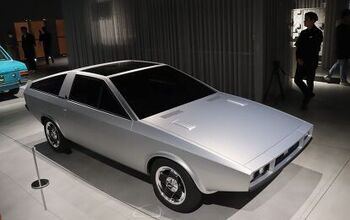
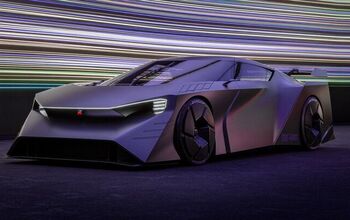
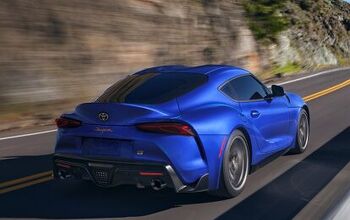
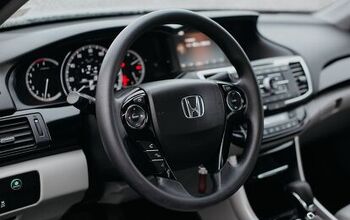

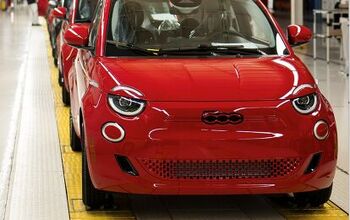

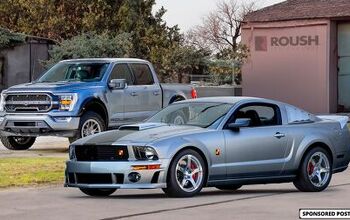

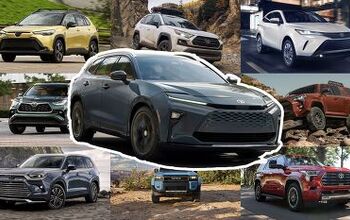
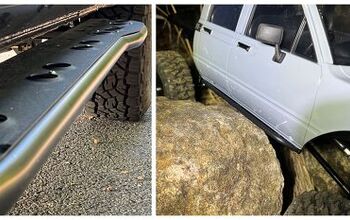

Comments
Join the conversation